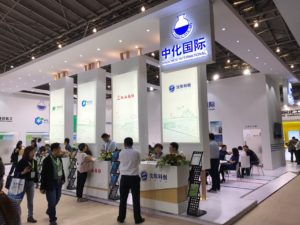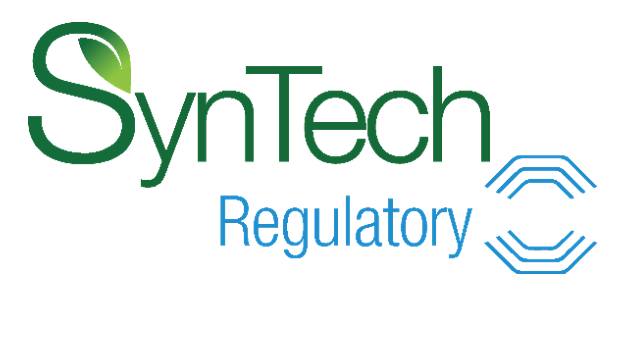Implications of Another (Potential) Mega-Merger: ChemChina and Sinochem

“Every layer in the international agrichemical supply chain needs to put on their thinking caps to figure out new strategies and seize opportunities that open up in the new business landscape, where size and efficiency matter as much as innovation.” –C.S. Liew
The word is that ChemChina and Sinochem, two major state-owned chemical conglomerates in China, have started a plan to merge under direction from the central government. The Chinese government objective, reportedly, is to create a single huge chemical conglomerate with sales of $100 billion that would effectively rival the many international chemical corporations.
The two conglomerates have denied that such a merger plan exists. But going by the saying, “there’s no smoke without fire,” let’s assume that they will proceed to merge after the Chem China-Syngenta deal is closed in 2017 and in line with the current wave of mega-mergers of their international peers.
The Potential Implications
I will focus my discussion on the generic agricultural chemical sector alone and leave aside their respective oil, fertilizer and industrial chemical businesses. I will also assume that the ChemChina acquisition of Syngenta will close by the middle of 2017. (Please see my February 2016 article, “What the ChemChina – Syngenta Deal Means”)
First, here are the respective agricultural chemical subsidiaries of these two conglomerates and their various manufacturing entities’ key products:
ChemChina Sinochem
Anpon (ethephon, buprofezin) *Shenyang Sciencreat (sethoxydim, clethodim)
Sanonda (paraquat, glyphosate) Yangnong (pyrethroids, dicamba)
Anhui Kelihua (nicosulfuron, azoxystrobin)
Jiangshan (glyphosate, amide herbicides)
* In strategic partnerships with Syngenta, BASF, FMC, and Bayer
To the R & D majors
Since both of them at this point in time are generic agrichemical producers, there would be little impact on the R&D majors in terms of new chemical synthesis. Having said that, Sinochem does have an R&D center called Shenyang Research Institute of Chemical Industry (now renamed Shenyang Sinochem Agrochemicals R&D Co., Ltd.) that has had limited success in coming up with new molecules of any market significance. It is near-impossible for such resource-poor and experience-deficient chemical research entities to compete with the powerhouses of Bayer, Syngenta, DOW, DuPont, and BASF in coming up with new blockbusters for the international markets. The acquisition of Syngenta by ChemChina is surely a recognition of this fact.
Given that I assume the ChemChina-Syngenta merger is a done deal, the mergers of the two Chinese conglomerates will have some important implications on the supply chain.
Firstly, instead of just ChemChina, the two Chinese generic producers will both benefit from the powerful distribution networks of Syngenta as well as that of Adama. Cross-selling and product bundling will be a temptation and inevitable. The significantly enlarged group, comprising Sinochem and Chem China as well as Adama and Syngenta, will be a force to be reckoned with. Overall, they will gain a larger total market share than if each entity were to operate in isolation.
Secondly, the off-patent portfolio of Syngenta will benefit significantly from being produced more cheaply in China in either the current manufacturing facilities owned and operated by the two Chinese conglomerates or by their sanctioned fellow Chinese manufacturers. This in turn will allow the group to compete even more effectively against their global R&D major rivals.
Thirdly, the remaining R&D majors, or newly merged R&D majors, will have to react and counter this merged group. They will align themselves in terms of purchasing of intermediates or technical grade pesticides and formulations with the competitors of the merged group to equalize the latter’s power in the marketplace. They will need to be more aware of any potential attempts at controls of supplies and pricing and take appropriate measures to forestall and counter them.
To fellow generic agrichemical manufacturers in China
Conventional wisdom would suggest that their fellow Chinese generic producers will lose a lot of business especially outside of China. If the merged group eats up too large a market share internationally, it will cause customers of their Chinese competitors to demand lower prices to remain competitive. It will depress prices and values to no one’s long-term benefit. My take is that the merged group will focus on value-added co-formulations and use these to enhance their overall profits rather than to compete head-on aggressively in the single active formulations.
Another aspect that ensures the merged group’s fellow Chinese producers will continue to enjoy their market share is that the latter are owned and operated by individual entrepreneurs who are more nimble compared to the “elephantized” decision making process of managers in mega state-owned enterprises. This weakness is already showing in at least one current entity of ChemChina where they have lost their leading position in a key product and also losing key personnel to rivals in the private sector.
Besides, any attempts at rationalization, consolidation and harmonization of management practices involving state-owned units and acquired international entities will be extremely challenging. Attempts at placing international managers into their Chinese entities for the purposes of technology and management expertise transfers as well as cross-fertilization of business cultures will face resistance from local managers who are paid a fraction of what international managers are earning. Jealousies and company politics will prevail and suck away valuable resources along the way.
So, overall, the fear that such a merged group will severely impact competition negatively is unfounded, at least in the short to medium term.
To competitors in India and the rest of the world
This enlarged merged group will present their Indian competitors even greater challenges beyond that of the erosion of their comparative advantages in terms of command of the English language and long-standing international business experience. The Indians’ advantage in their understanding of the need for registration data generation which the Chinese are still grappling with will also be eroded. As I mentioned, with Adama and Syngenta in their merged group, the Chinese will quickly overcome these weaknesses vis-à-vis the Indians and other international second-tier competitors, i.e., the non-R&D multinationals.
The Indian manufacturers and non-R&D multinationals do buy a significant amount of generic pesticide intermediates as well as technical grade pesticides from Chinese manufacturers. If there are any intermediates and technical grade pesticides that are not widely produced in China, the merged group could exercise some form of control over pricing and supplies, directly or indirectly. Keep in mind that anti-competition laws are not that strong within China compared to Western nations and markets.
To distributors and dealers around the world
To those who are doing business with the merged group, they will have to contend with more pressures on product bundling and cross-selling from the various entities of the group going forward.
Competitors will need to be aware of the potential in losing market share and take measures early to defend it. They will need to align themselves with suppliers who are innovative and able to bring them differentiated products.
They will also need to engage more seriously in M&A themselves to operate more effectively in a fast-changing business landscape driven by the current wave of mega-mergers. Most markets around the world are over-serviced with too many national distributors and too many dealers in any given farming township. No doubt the wave of mega-mergers at the manufacturing level will have the M&A trend and fervor filtered down to the distributors and dealers around the world. Many of the founders of these distributorships and dealerships are aging and suffering from fatigue arising from too much hard work for too little returns, or lowered returns, over the past few years. They are mentally primed for mergers and acquisitions.
The ones who need to make these acquisitions at distributor and retailer levels will be those suppliers/manufacturers, be they the Indians or Chinese generic players or the second-tier MNCs such as FMC, Nufarm, UPL, Arysta/Chemtura (now under Platform Specialty) and some Japanese players. All of them are not engaged in any significant amounts of R&D save for formulation innovation. They need to gain better market access. They need to be closer to the end-users. If not, the current retailer groups such as those in Australia which, almost all, have their own house brands of generics supported with their own labels and registrations will make them totally irrelevant in the new business landscape.
To the farmers
With or without their knowledge or awareness, they are going to be buying and using more products from the merged group. Or at least, the pressure for them to do that will intensify anyway. Will this mean less product or brand choices and worse, higher prices?
In the light of what I said earlier, competition will remain intense post-merger of the two Chinese conglomerates as well as after the international mega-mergers. Their Chinese competitors will take counter-measures to remain relevant in the new business landscape. So will the international and Indian competitors.
What will indeed drive prices higher for the farmers, and give them less choice in terms of brands, are the days when there will be wave after wave of mergers at the distributor and dealership levels.
Conclusions
- The rumored merger of ChemChina and Sinochem will take place, sooner or later, probably sooner rather than later. The current wave of mega-mergers at the international level dictates that this moves forward.
- Every layer in the international agrichemical supply chain needs to put on their thinking caps to figure out new strategies and seize opportunities that open up in the new business landscape, where size and efficiency matter as much as innovation. The nimble ones will survive and thrive but some, sadly, will be made irrelevant by the current sweeping changes in the marketplace.
- The long-delayed and needed consolidation through M&As at the distributor and retailer levels will be spurred by the current wave of mega-mergers.






